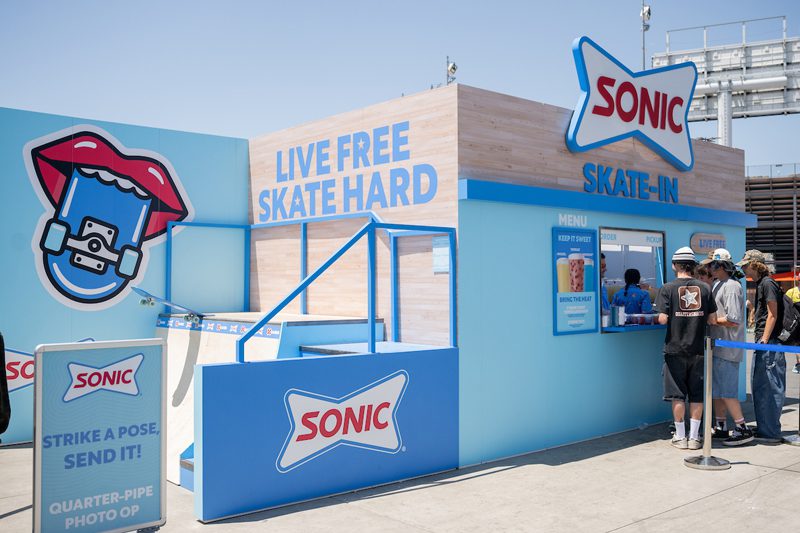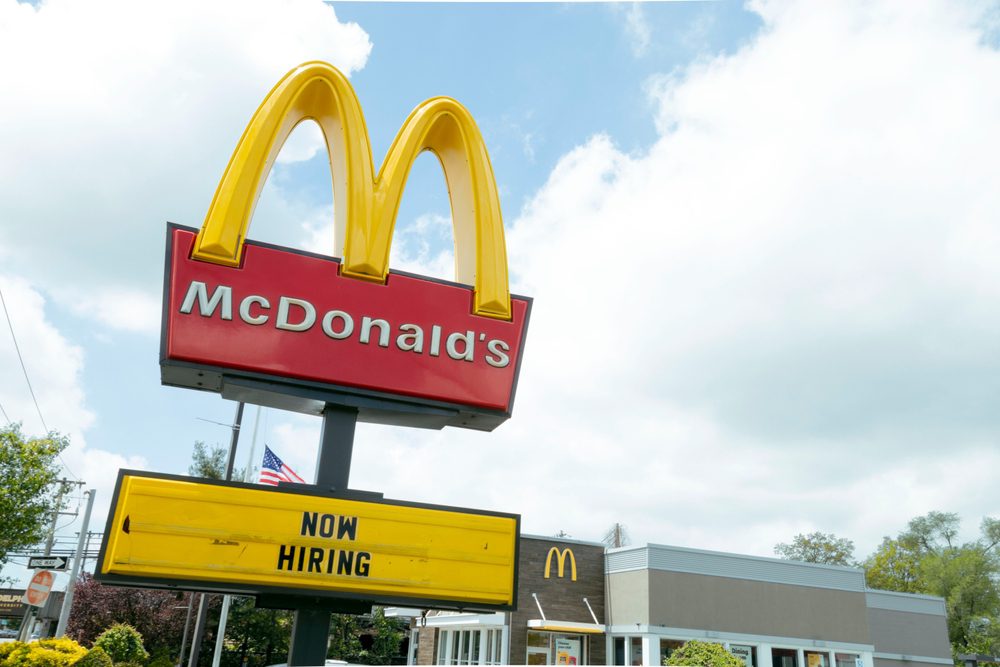Holiday sales at bookstore chain Barnes & Noble rose nearly 9 percent to $555 million, better results than most retailers were able to claim this Christmas season. So why are Barnes & Noble executives still having restless nights? Because sales at online bookseller Amazon.com grew by 250 percent in the fourth quarter to $250 million. Yes, Barnes & Noble’s revenue still overshadows Amazon’s, but maybe not for long.
Until now, Web sites generally have been seen by marketers as nice to have – an ego-serving accessory like a sports car, not something essential like indoor plumbing. But the recently concluded holiday shopping season figures to change that attitude for good. In the view of many industry analysts, big-time consumer marketers had better begin to promote vigorously and knowledgeably on the Net within the next year – or risk being left out of what is clearly becoming a vital new channel.
Although Christmas 1998 fell on a Friday, giving buyers one more shopping day than last year, a lack of typical cold winter weather made for a sluggish start to the sales season. Traditional department stores, responding slowly with discounts and special offers, saw pre- Christmas sales rise only 1 to 3 percent compared with a 7 percent gain in 1997. In fact, the season was saved for the bricks-and-mortar set only when stores offered lavish post-Christmas discounts. Back on the Net, e-commerce sites were singing a different carol. Still, in both traditional and online retail settings, promotional offers loomed large in boosting traffic and sales.
The increase in Internet sales came as no surprise, but the size of the spike sure did. Promotion-wise, Web retailers ganged up in mall-like fashion to keep mouses clicking and volumes rising. Santa Clara, CA-based Yahoo and RealTime Media, Haverford, PA, ran a $1 million instant-win holiday promo that tied in Internet merchants like Sierra Online, Shabang, Great Food Online, and Digital Chef, while Irvington, NY-based Yoyodyne offered a 350-retailer smorgasbord called EZSpree.
There was also Visa USA’s $20 million Magic Moments promo, in which the credit card giant paired with Dell Computer and Best Buy to pay for purchases made by cardholders – and gave a nod to Christmas Future by spotlighting Web retailer eToys.com in advertising for the effort.
Some cyberspace-watchers had predicted that online sales would double this year to $2.3 billion. As it turned out, they more than tripled, according to a report released by Boston Consulting Group and shop.org, an association of online retailers. The report puts online sales up 230 percent from last year, based on a study of 17 major Web merchants during the Christmas season.
Although it didn’t break out dollar estimates for the holiday period, Boston Consulting is sticking by an earlier prediction that total online sales would reach $13 billion in 1998. The company predicts the total will hit $40 billion in 1999.
“The changes suggest that shoppers are motivated to use a mouse and modem rather than fight crowds in malls or on Main Street,” says Bob Evans, who heads up e-commerce initiatives at Internet research firm Media Metrix in New York City. David Pecaut, Boston Consulting’s senior vp for e-commerce practice, agrees: “This was not just a Christmas phenomenon. It’s a case of people starting to change their overall buying patterns.”
For many behind the scenes, it was something else: a glimpse of what savvy promotions could produce in this huge, emerging market.
According to Radnor, PA-based Internet Research Group (IRG), America Online’s 15 million members spent $1.2 billion between Nov. 26 and Dec. 27. For some 1.3 million of those members, it was the first time they had shopped on the Web.
What drove shoppers to the Web? According to Wendy Goldberg, AOL’s vp-electronic commerce, it was promotions: AOL leveraged three years of online promotional and merchandising experience with the mass market on behalf of its retailers. “We advised our online retailers what things they should promote, when, and how, in order to attract the most online shoppers,” she says.
Because last-minute shoppers flock to the Web, AOL advised retailers to have special offers ready for the final shopping days. In addition, members were allowed to use AOL’s Gift Finder and Gift List, and other special promotional tools. Knowing that shoppers were looking for value played a great part in marketing tactics, Goldberg added.
Apparently, the approach went over well with the public. According to IRG, 63 percent of AOL shoppers said they were “very satisfied” with the experience, and 98 percent said they would be motivated to buy online in the next six months.
“It’s clear that this past holiday season marks a turning point, when shopping online really became a key part of consumers’ shopping patterns,” says Bob Pittman, AOL’s president.
Many online promotions bind clusters of e-commerce sites together in virtual shopping centers that expose consumers to a wide variety of products. The result is an unheard-of ability to attract shopper traffic. As part of a subsidiary promotion for participating merchants in Yoyodyne’s EZSpree, consumers were offered a prize of two tickets to the third game of next year’s World Series. To be eligible, contestants had to visit 15 designated retail Web sites. The result? “We got 106,000 people making an average of 12 visits to those sites,” says Yoyodyne’s Jerry Schereshewsky.
Yahoo’s scratch-and-win promo tied in 16 different commerce sites. The chance to win an instant $1 million sent large numbers of shoppers through the promo’s banner ads to individual merchant sites, where “thousands of secondary prizes” were won just for browsing, according to Chuck Seidman, ceo of RealTime Media.
Says Shereshewsky: “Because shopping online isn’t institutionalized behavior yet, it needs promotions – something that gives the shopper a whack across the head to remind them to go back and visit the site. Prizes and promotions do just that.”
Tally-ho! Several Internet retailers really cashed in during the holidays. Business at QVC was up three times more than last Christmas (the shopping network’s site pulled in $500,000 in orders per day),while sales at Office Max soared 1,300 percent over the same time period last year, according to a company spokesman who refused to give dollar amounts.
In general, toy and apparel sites had the greatest traffic growth between Nov. 27 and Dec. 24. A survey by New York City-based Media Metrix, an online research company, showed that visitors to Web shopping sites increased 25 percent during the four-week period leading up to Christmas. The books/ movies/music category acted as a gateway, as 46 percent of site visitors also went on to shop at online department stores. Another 49 percent went to toy sites, and 54 percent visited apparel sites. Approximately one million new visitors went to five or more shopping sites during the period, and one out of five online shoppers visited at least three shopping sites.
According to Media Metrix, females 12 and older constitute 47 percent of Web users in the U.S., but they accounted for 60 percent of 1998 holiday purchases. The number of women visiting apparel sites increased 86 percent from the year before, Media Metrix reported.
“Web marketers,” says Schereshewsky, “were by no means prepared for the tidal wave of demand they got hit with.” The barnesandnoble.com and eBay sites slowed or collapsed under waves of surfers who were testing their capabilities like never before. Internet giant Amazon.com was forced to send out e-mails five days before the holiday warning customers that, due to product shortages, orders would not arrive by Christmas Eve. (What a difference a year makes. Orders placed at Amazon.com on Dec. 23, 1997 arrived in time to be placed under the tree).
“I’m not surprised by the problems at all, given the spike in demand,” says Nicole Vanderbilt, senior analyst at New York City-based research firm Jupiter Communications. “Going forward, the ability to fulfill orders will determine who succeeds and who doesn’t.”
Future shock Will the e-commerce boom crumble the bricks-and-mortar retail establishment?
Hardly.
William Armstrong, an analyst at New York City-based Fahnestock & Co., reminds that while the Web made inroads over the holiday, driving share prices for Internet retailers and online services “to stratospheric heights,” Web marketing still remains only a small fraction of the total retail business. “Aside from books and computer-related goods, it’s not [had] that big of an impact,” he says.
And in the near future? “The success of the online holiday season should drive retailers to investigate the possibilities the medium has to offer,” Goldberg says.
Schereshewsky agrees, observing that department stores and other traditional retailers “were really shaken” over the Internet’s holiday performance. He even noted that the traditional sector might have done better if it had promoted more effectively earlier. “Any retailer that doesn’t understand how to promote aggressively is missing a key bit of insight.”
Traditional retailers are already taking action. Armstong notes that while mainstream companies are “cautious,” they are also busy making entries into the online world. “They’ve either launched a site or they are looking at launching a site,” although they usually offer only a fraction of the goods available in their stores, he says.
To Shereshewsky, the opportunity is there. The QVC home shopping site, he says, is making $40 million to $50 million a year because it knows how to market well-known brands to consumers. And if QVC can do it, Macy’s can do it – if Macy’s “puts up the right kind of site and promotes it correctly,” he says.
Andrea Williams, Internet analyst for San Francisco-based Volpe Brown Whelen, is more to the point: “If we get to the end of the year and mainstream companies don’t have legitimate Internet strategies in place, they run the risk of becoming irrelevant.” To her, the year ahead will be a critical time for traditional retailers to become part of what is certain to become a huge market.
In fact, fear of being left out is spurring big names to get moving. AT&T Corp.’s $48 billion deal to acquire Tele-Communications, Inc. (TCI) was a way to jumpstart its own Web marketing efforts. Walt Disney Co.’s effort to take over Infoseek Corp. is another such move. Palo Alto, CA-based AtHome Corp., a fast-growing cable modem service, last month agreed to buy Excite Inc. in a $6.7 billion deal. (TCI recently became the main shareholder of AtHome Corp.) Lycos, Inc. is considered a prime takeover target, too.
Shelly Taylor, whose San Francisco-based Shelly Taylor Associates tracks Web sites, counsels that, to avoid making miscues, Web strategies have to be forged “at the highest corporate levels.”
Schereshewsky is certain they will be. “Without a doubt, selling online is a critical component of where the world is heading. It’s not a question of ‘when’ anymore.”
Less than half of U.S. Web users are women, but they …
* made 60% of 1998 holiday purchases.
* made up the largest group of visitors to:
– TOY SITES: 62%
– DEPT. STORES SITES: 56%
– APPAREL SITES: 61% (86% increase from ’97)
SOURCE: MEDIA METRIX
Some 15 million America Online members spent more that $1.5 billion at retail Web sites in the six weeks before Christmas ’98. December 17 was AOL’s biggest shopping day on record: $36 million in goods and services sold.
Fourth quarter sales at Amazon.com swelled by 250 percent.
Sales Web-wide shot up by 230 percent, according to a study of 17 top Net retailers by Boston Consulting.
Visitors to Web shopping sites increased by 25 percent in the four weeks before December 25, per Media Metrix.
SOURCE: INTERNET RESEARCH GROUP
 Network
Network

